30 years of Mahesh Bhatt's Junoon - A cursed weretiger and a magical dagger
Long before Amar Kaushik’s Bhediya (2022), Mahesh Bhatt’s Junoon (1992) raised the bar for the Indian were-creature movie genre

Last Updated: 01.25 AM, Nov 25, 2022
Werewolves have always been part of folklore around the world, and have existed by extension in theatre and cinema. But it was John Landis' cult classic, An American Werewolf in London (1981) that birthed a new Hollywood genre that combined werewolf horror with comedy, and packaged it with slick (for that time) make-up and visual effects. It spawned movies such as Teenwolf (1985) and even a sequel, An American Werewolf in Paris (1997).
The Hollywood werewolf horror-comedy
In An American Werewolf in London, backpackers David Kessler (David Naughton) and Jack Goodman (Griffin Dunne) visit an English village bar called The Slaughtered Lamb, where the villagers warn them not to stray from the road, into the moors, as it is a full moon night. Sure enough, deep in conversation, this is exactly what they do. A wolf-like creature kills Jack and mauls David.
David wakes up three weeks later in a London hospital under the care of Dr Hirsch and nurse Alex Price. David suffers nightmares, and one night, an undead Jack tells him that since a werewolf has bitten him, he would turn into one too. The right thing to do is to kill himself before he endangers others.
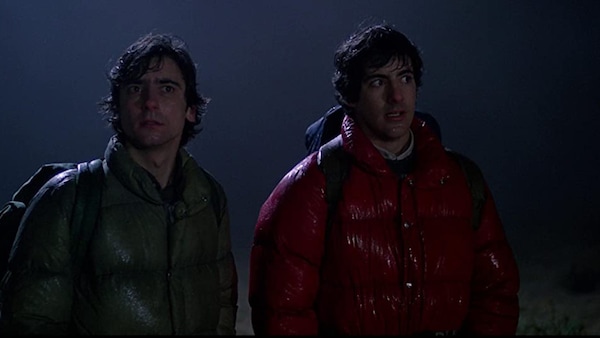
David and Nurse Alex are attracted to each other, and on his discharge from the hospital, David moves in with her. When the full moon rises, David does indeed turn into a werewolf but awakens the following morning in the wolf's enclosure at the zoo, unaware of the horror he has wrought.
When David comes to know of the killings, he is distraught. He then notices an even more grotesque Jack beckoning him into a theatre. David not only has to contend with Jack’s insistence that he must kill himself at least now, but he also must deal with the belligerent undead six whom he had killed. David turns into the werewolf in the movie theatre and becomes the scourge of London. Eventually, he is trapped in an alley, and Alex arrives there, hoping to persuade him to give himself up. When the werewolf appears to reach out to her, he is killed on the suspicion that he intends harm to her.
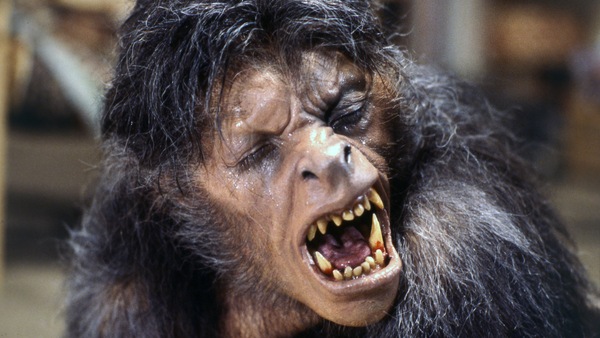
The comedy in An American Werewolf in London is not only in the buddy banter between Jack and David, but also in the scene following David’s first kill, as he attempts to cover his nakedness. There is also the incongruity of the movie theatre as a setting where David’s six victims helpfully suggest ways for him to kill himself, and he eventually unleashes a bloodbath, even as a sex scene unfolds on screen. Music is thematic to the movie, and after David’s death in the end credits, it turns upbeat, resetting the movie experience to a less sombre one.
Indian were-creature movies
In Hindi cinema, the Ramsay Brothers made were-creature films such as Darwaza (1978) and Dahshat (1981), where humans turn into unrecognisable creatures. The movies may appear unintentionally funny today but were harbingers of a wave of popular low-budget horror movies.
There have also been a plethora of ichhadari naags and naagins in Indian cinema, where humans turn into snakes, and snakes take on the form of humans to exact some form of revenge, as in Nagin (1976), Nagina (1986), Nigahen (1989), Sheshnaag (1990), Hiss (2010), and countless others across film industries in India.
Despite its many flaws, Mahesh Bhatt’s Junoon (1992) is a step up from these two Indian sub-genres on shapeshifting and differed from its inspiration, An American Werewolf in London in many ways. For one, Junoon was a horror drama, not a comedy. Secondly, it retained some of the elements of the were-creature films of the Ramsay Brothers that the audience was familiar with (like the folk legend at the heart of the story, a romantic angle, a deity providing the solution to end the horror, and even the choice of a weretiger), but it raised the bar on the genre with its production values. It was a sophisticated departure from B-grade films which combined horror, sleaze and comedy typified by tacky costumes, bad lighting, and comical visual effects.
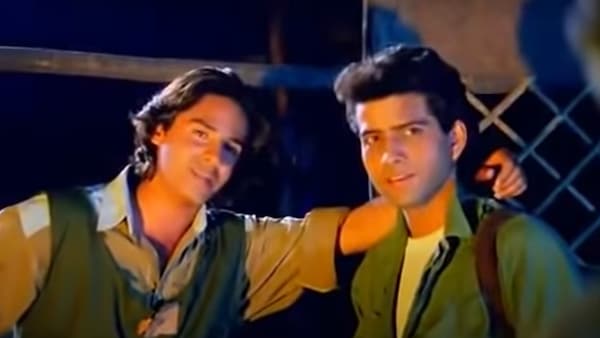
Junoon and the updated Indian were-creature movie
Junoon begins on a ‘puranmashi ki raat’ (full moon), when a villager, Bhima (Mushtaq Khan), warns the suave Vikram and his friend Arun against hunting in the forest because of a dead tiger’s ghost that appears on full moon nights. Anybody who survives an attempt to attack it would turn into a tiger on the next full moon. Sure enough, Arun is killed by the ghost tiger, and Vikram is mauled, but survives. Bhima now wants to kill Vikram because he is accursed, but Vikram is rescued by Bhaskar Inamdar (Homi Wadia), a ‘wildlife association member’. Vikram is admitted to the city hospital where Dr Neeta (Pooja Bhatt) works. Neeta is in a relationship with Ravi (Avinash Wadhawan) and they hope that his prospects as a music composer will improve so that they can be married.
On the operating table, Vikram dies, but later, miraculously comes alive. Vikram awakens to find out that Arun is dead, and he also suffers from nightmares about the tiger. Meanwhile, the undead Arun tries to persuade Vikram to kill himself before he harms innocent people with his dark powers, but Vikram proclaims that he would rather become a beast than kill himself. (This is a marked departure from the dark comedy Hollywood original, becoming instead, an anti-hero drama where Vikram is depicted as vicious even before he turns into a weretiger.)
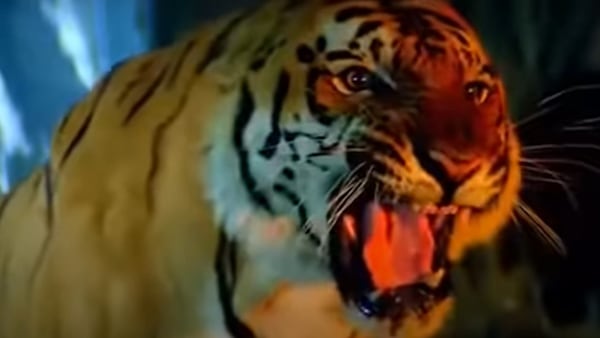
Vikram is enamoured by Neeta’s innocence, and he begins to regard her as his true prey (although one does not know why he leaves her unharmed). Once discharged from the hospital, Vikram charms her family and asks for her hand in marriage. Neeta, however, plans to elope with Ravi. Vikram follows her to the rundown bungalow that Ravi lives in (that looks suspiciously like an erstwhile avatar of Shah Rukh Khan’s home, Mannat.) Interestingly, the struggling musician Ravi, lives in this bungalow with a low-hanging chandelier, harking back to Mahesh Bhatt’s own Arth (1982) and the struggling musician character of Raj (Raj Kiran) who lives in a similar establishment.
Unbeknownst to Neeta, Vikram ensures that Ravi does not reach at the designated time of their elopement. The heartbroken Neeta reluctantly agrees to wed Vikram. Ravi even turns up at their wedding for the customary bewafai song. At midnight, Vikram transforms into a tiger, but Neeta is not privy to it. As in the Hollywood original, the first transformation occurs a little past the midway mark in the story to establish the character of the protagonist independent of the transformation.
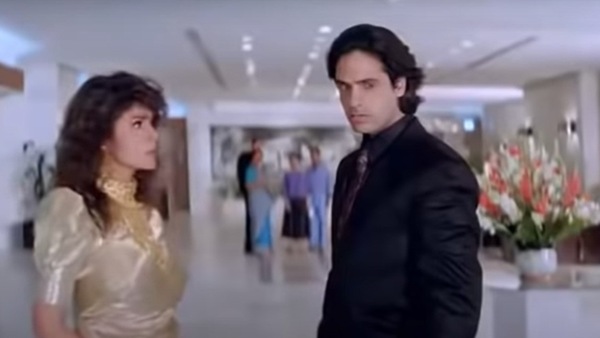
While Neeta worries about his disappearance, the following morning, Vikram returns to being human. Unlike the Hollywood original where the protagonist genuinely has no recollection of the night before, Vikram revels in the memory of his first kill. However, with Neeta, he feigns ignorance of what happened the previous night.
Bhaskar and Bhima tell Neeta the horrific secret about Vikram. The disbelieving Neeta visits his house, unaware that he is circling his next kill at a nightclub. Ravi, meanwhile, suspects that there is more to all that has happened and joins forces with Bhaskar and Bhima.
Neeta sees Vikram’s transformation first-hand and traps him in a room. The weretiger escapes and kills Bhaskar brutally. The police refuse to believe Neeta, Ravi and Bhima, but Harry (Tom Alter), the forest officer who is well-versed in the local folklore, explains that even if Ravi shoots the weretiger (not merely gets bitten or mauled), he will be accursed. Harry tells them of the dagger of a goddess in a cave that, if used on the weretiger, will end the curse.
Vikram first tortures Harry, then Bhima for information on what Ravi and Neeta are up to. Ravi finds the dagger but is overpowered by the growing strength of Vikram, who can now roar menacingly at will. While Vikram is in the process of turning into the weretiger, Neeta finds the dagger and throws it to Ravi who kills the weretiger and ends the curse.
Junoon, in many ways, was adapted for the Indian audience's sensibility, with its backstory about a curse, the choice of a weretiger as against a werewolf, the ‘Indian family values’ sentiment, and even the choice of avoiding comedy when such horror was being depicted, and the use of songs by Nadeem-Shravan, who were all the rage in the 1990s, as breathers in an otherwise serious drama.
Bhediya and the Indian werewolf movie
With the horror-comedy genre in Hindi cinema taking off, the time is ripe for a werewolf movie format with bite, as made famous by An American Werewolf in London. Amar Kaushik’s Bhediya (2022) which will release on November 25, 2022, comes with its own legacy of being the third of Producer Dinesh Vijan’s series of horror comedies after Stree (2018, also by Amar Kaushik) and Roohi (2021).
Touted to be India's first werewolf movie, Bhediya promises laughs, even as it intends to send chills down the spine. And going by its trailer, Bhediya appears truer to the Hollywood werewolf horror-comedy genre than other such movies made before it.
However, if it were not for Junoon bridging the gap thirty years ago with its refined treatment of the horror genre, Bhediya’s acceptance as a horror-comedy may have had a wider chasm to cross between the Ramsay Brothers' style of filmmaking and the Hollywood werewolf genre.
(Views expressed in this piece are those of the author, and do not necessarily represent those of OTTplay)
(Written by Saritha Rao Rayachoti)

